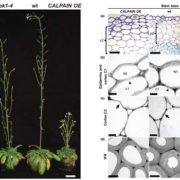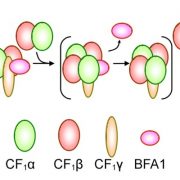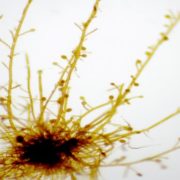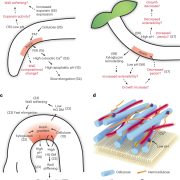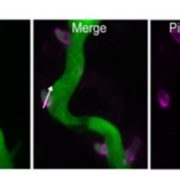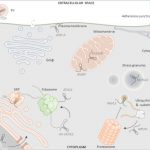Review: Organelles-nucleus-plasmodesmata signaling, and roles in plant physiology, metabolism and stress responses (Curr. Opin. Plant Biol.)
Review: Organelles-nucleus-plasmodesmata signaling, and roles in plant physiology, metabolism and stress responses
 Plasmodesmata (PD) are pores that connect plant cells and allow the flow of small molecules and information but also viruses. This traffic is tightly regulated, in large part by the deposition or removal of callose that impedes movement. Azim and Burch-Smith review a key signaling module that controls plasmodesmatal function, that they call the organelle-nucleus-plasmodesmata signaling (OPDS) module. This model stems from genetic studies in which mutants affecting intercellular trafficking were found to have primary defects that affected retrograde (to the nucleus) signaling from mitochondria or plastids. Several other mutants that affect organelle metabolism were also found to affect cell-to-cell movements. Although as yet the signals are largely known, the authors suggest that this signaling module serves to integrate carbon fixation with carbon transport, specifically export to the phloem via PD. They speculate on the evolution of this signaling module. Finally, they address the many questions that remain to understand the OPDS pathway and its contributions to plant physiology and stress responses. (Summary by Mary Williams @PlantTeaching) Curr. Opin. Plant Biol. 10.1016/j.pbi.2020.09.005
Plasmodesmata (PD) are pores that connect plant cells and allow the flow of small molecules and information but also viruses. This traffic is tightly regulated, in large part by the deposition or removal of callose that impedes movement. Azim and Burch-Smith review a key signaling module that controls plasmodesmatal function, that they call the organelle-nucleus-plasmodesmata signaling (OPDS) module. This model stems from genetic studies in which mutants affecting intercellular trafficking were found to have primary defects that affected retrograde (to the nucleus) signaling from mitochondria or plastids. Several other mutants that affect organelle metabolism were also found to affect cell-to-cell movements. Although as yet the signals are largely known, the authors suggest that this signaling module serves to integrate carbon fixation with carbon transport, specifically export to the phloem via PD. They speculate on the evolution of this signaling module. Finally, they address the many questions that remain to understand the OPDS pathway and its contributions to plant physiology and stress responses. (Summary by Mary Williams @PlantTeaching) Curr. Opin. Plant Biol. 10.1016/j.pbi.2020.09.005


